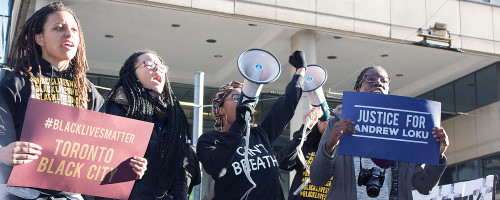“It’s not as bad as you think.”
This is a message often heard in Canada, janaya khan, co-founder of Black Lives Matter Toronto, tells a large crowd of people gathered outside of Toronto Police headquarters. But it’s far from the truth, adds khan.
“In 2016, we are fighting for the same things that we were fighting for 50 years ago, 100 years ago, 300 years ago,” says the organizer and educator. “We’re still advocating for life itself, because in 2016 we have to have a movement like Black Lives Matter.”
The Black Lives Matter movement, which started in the United States after the acquittal of George Zimmerman for the murder of Florida teenager, Trayvon Martin, began in Toronto in 2014 when khan and a group of other organizers got together to talk about the killing of Mike Brown in Ferguson and Jermaine Carby in Brampton, Ont. at the hands of police officers.
“We were merely facilitating what was already here. This could not exist if you were not here,” shares khan, to a round of cheers. “The movement is bigger than us, greater than us, but cannot exist without us.”
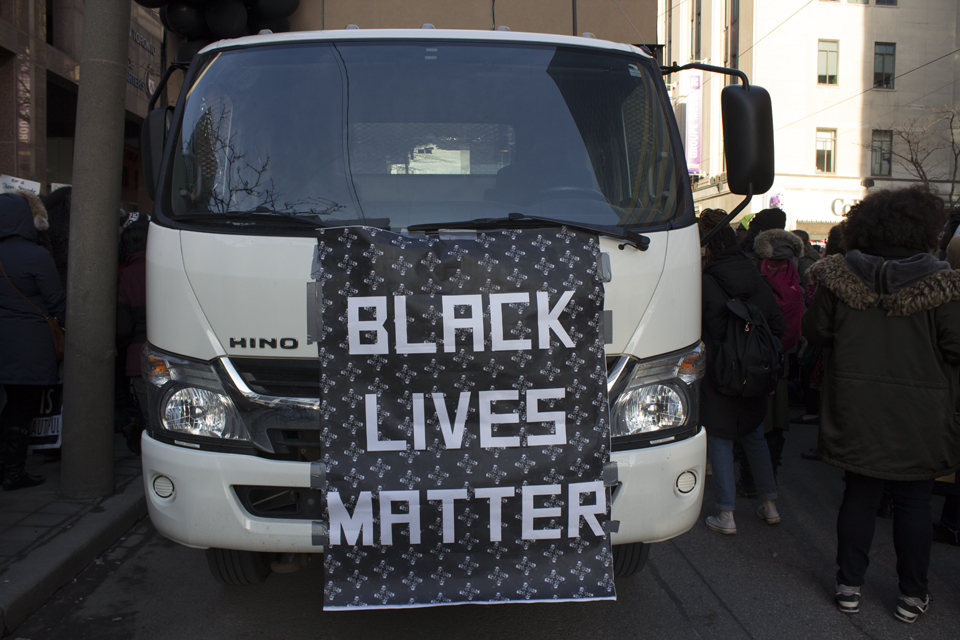
“You know the magic that happened in this space? People I’ve never met before became practically family to me.”
This rally, titled BlackOUT Against Police Violence, took place on March 26, day seven of what is now a two-week long (and continuing) peaceful protest to challenge anti-Black racism in Toronto, after the province’s Special Investigation Unit (SIU) – which investigates cases in which civilians are injured or killed by police officers – determined that charges should not be laid against the officer(s) who killed 45-year-old Andrew Loku last summer.
On March 21, also the United Nations’ International Day for the Elimination of Racism, videos surfaced online of the Toronto police using force against BLMTO and its supporters, including putting out fires they had set up to keep warm.
“I’ve never experienced anything like this in my life – the love, the community, the rage,” says TK, who took the stage at BlackOUT to share the experience of protesting throughout the week.
“They came for our physical fire, the only thing that was keeping us warm in this place, they forgot about our everlasting fire, the one they can’t see … You know the magic that happened in this space? People I’ve never met before became practically family to me.”
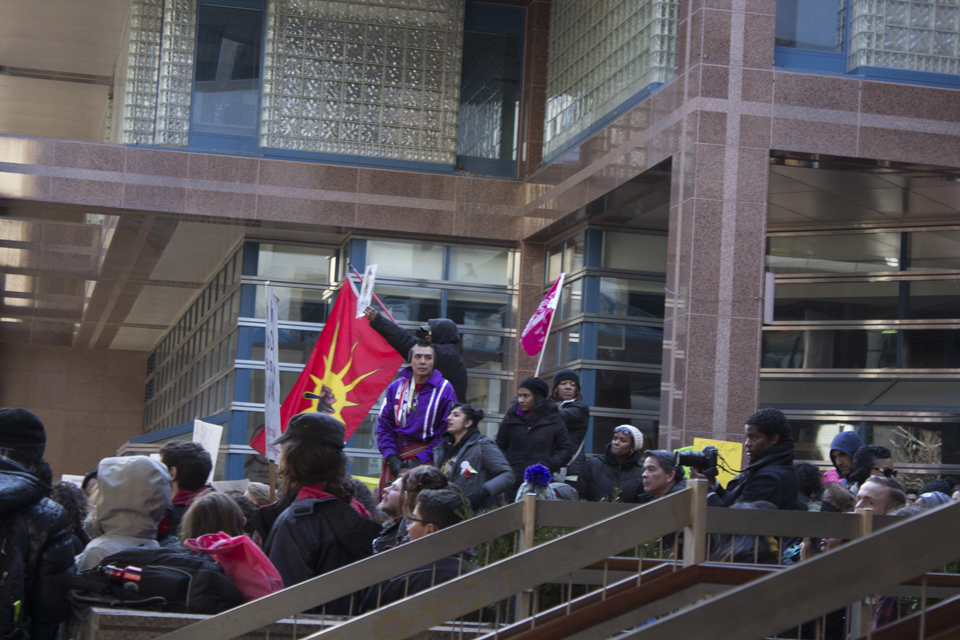
The fire TK speaks of is heard through the energetic chants of “Black lives – they matter here,” “No justice, no peace, no racist police,” and “Can’t stop the revolution, Black power is the solution.”
The love is felt as through the cold the vibrant sounds of songs like Mark Morrison’s “Return of the Mack” and Sean Paul’s “Like Glue” blast out of the loud speakers and protesters dance and chant, arms linked and smiling at one another
“No life will ever be forgotten, because we, we’re a family and that’s a thing they never counted on,” says one of the BLMTO co-founders* through a megaphone. The cheers and applause continue.
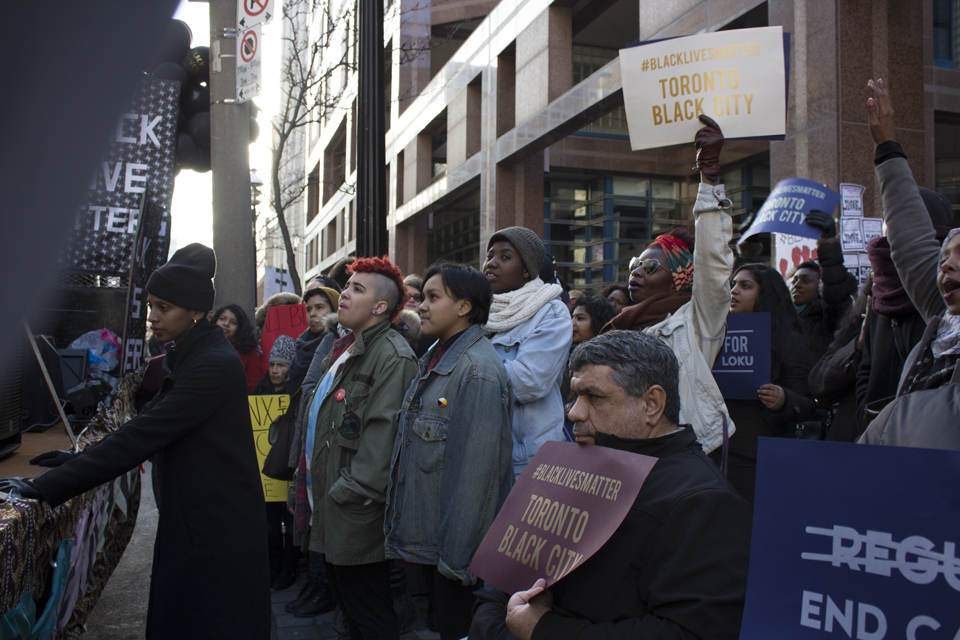
“How could you say this is a country of opportunity, of peace, of human rights?”
Asking critical questions
Through the uplifting vibe, the crowd of hundreds of supporters from all walks of life standing in solidarity with the Black Lives Matter movement are left pondering important messages and questions.
“How could you say this is a country of opportunity, of peace, of human rights?” asks Kiden, one of Andrew Loku’s closest friends as she shares the story of Loku, who came to Canada from South Sudan and graduated from George Brown’s in construction just a month before his death.
“What about our families? Do our families not matter?” asks LaTanya Grant, cousin of 33-year-old Jermaine Carby, who was killed in September 2014 by police Peel region, which neighbours Toronto. “When we have to go to a Christmas dinner or a Thanksgiving dinner and not see that family member that was murdered at the hands of the people that are supposed to serve and protect us, how do you think we feel?”
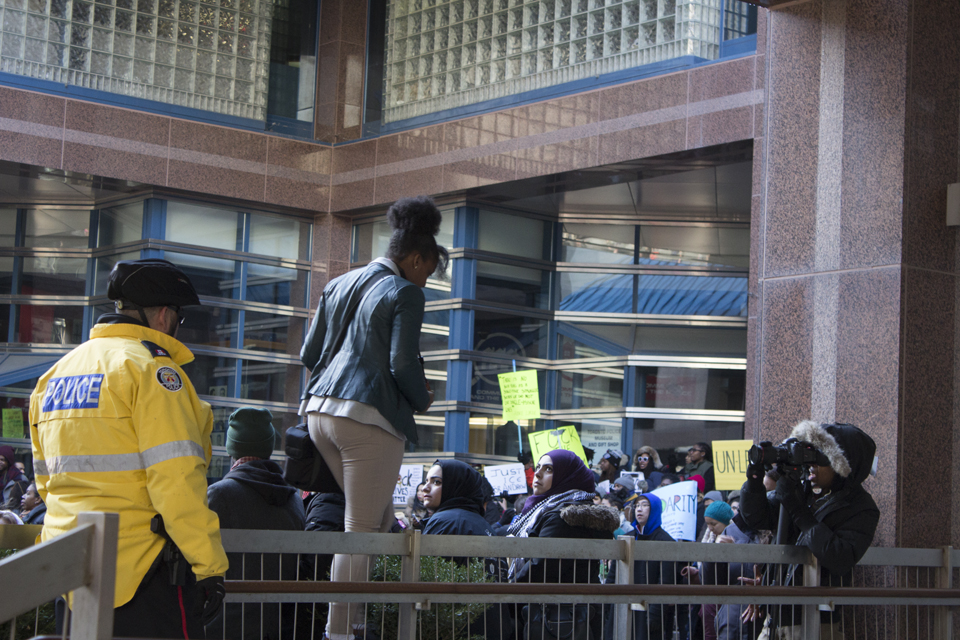
“If I’m going to be a photo journalist I have to cover stories that are important.” – Yvano Wickham-Edwards
Grant, who is back in school studying to become a lawyer, urges the crowd to take rallying a step further and, if they can, pursue careers in areas of policing, justice or the media – systems where the injustices being advocated against are rooted.
“We need to even have our own news station,” Grant says. “Until we have our own Black news station or we could actually show what’s really happening, and not a cut and paste of what their boss tells them to play … Why do they show up if they’re not going to tell our stories? They’re just here to basically show, ‘oh, yeah they’re upset and they’re having something downtown.’ They don’t know about the real hurting; they’ve never been harassed.”
Twenty-year-old Yvano Wickham-Edwards, a photojournalist and first-year journalism student at Centennial College says he is taking Grant’s call to action seriously in the pursuit of his career.
“If I’m going to be a photo journalist I have to cover stories that are important,” says Wickham-Edwards, who has been documenting various aspects of #BLMTOTentCity for his personal news website, www.27photos.ca. “…[T]here’s maybe not a bias, but a filter. And I’m trying to not fall into that category, it’s ironic going to school for that, but you have to get the knowledge and then use it in your own way.”
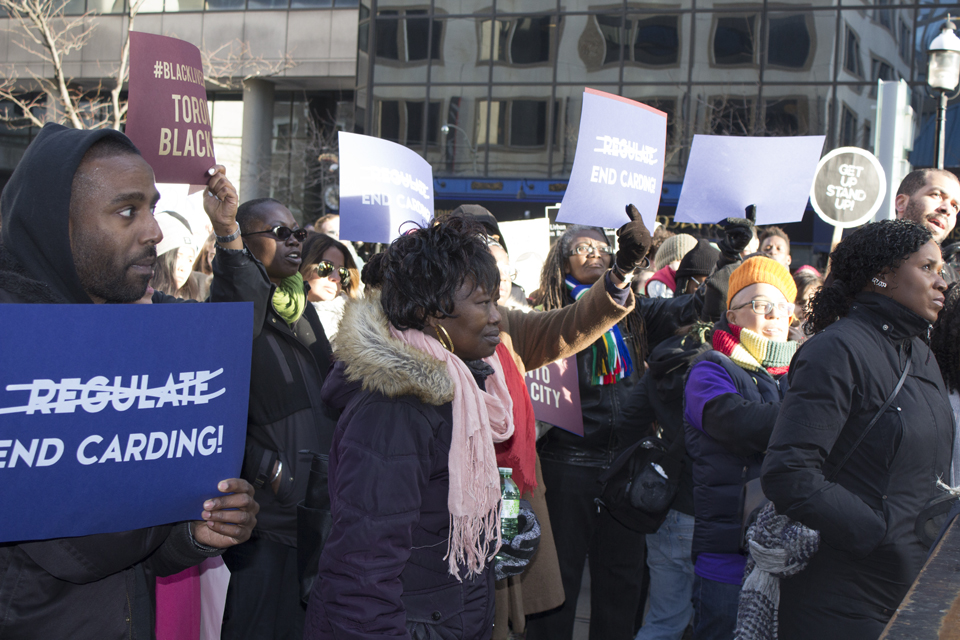
Demands for justice
At the outset of the protest, dubbed #BLMTOTentCity on social media, Black Lives Matter Toronto (BLMTO) sent a list of demands to Toronto Mayor John Tory, Ontario Premier Kathleen Wynn and Toronto Police Chief Mark Saunders:
- The immediate release of the name(s) of the officer(s) who killed Andrew Loku and charges to be laid accordingly.
- The immediate and public release of any video footage from the apartment complex where Andrew Loku was murdered.
- The adoption of the African Canadian Legal Clinic’s demand for a coroner’s inquest into the death of Andrew Loku.
- A condemnation of Toronto Police’s excessive use of force and ongoing intimidation tactics against Black Lives Matter Toronto protesters.
- An overhaul of the province’s Special Investigations Unit, in consultation with families of victims of police violence, the Black community, and the community at large.
- A commitment to the full elimination of the police practice called ‘carding’, including: the deletion of all previously recorded data, reframing of regulations to prohibitions, consistent implementation policy amongst different police boards, and concrete disciplinary measures for officers who continue to card.
- The immediate release of the name(s) of the officer who killed Alex Wettlaufer last month, and charges to be laid accordingly.
This past Friday, a motion put forth by three Toronto city councillors that asks Ontario to review the police services in Toronto and the SIU through an anti-Black racism lens was passed with the support of the mayor and all council members.
While BLMTO acknowledged this as a victory on Twitter, the organization stated that many of its demands have not been met, and the work is far from over.
#BLMTOTentCity continues with Black Reckoning taking place outside of police headquarters at 10:30 a.m. on April 4.
*Editor’s Note: The name of this organizer could not be provided as the reporter was unable to see the stage through the crowd to identify who was speaking at the time.
Photos © Priya Ramanujam & Urbanology Magazine

